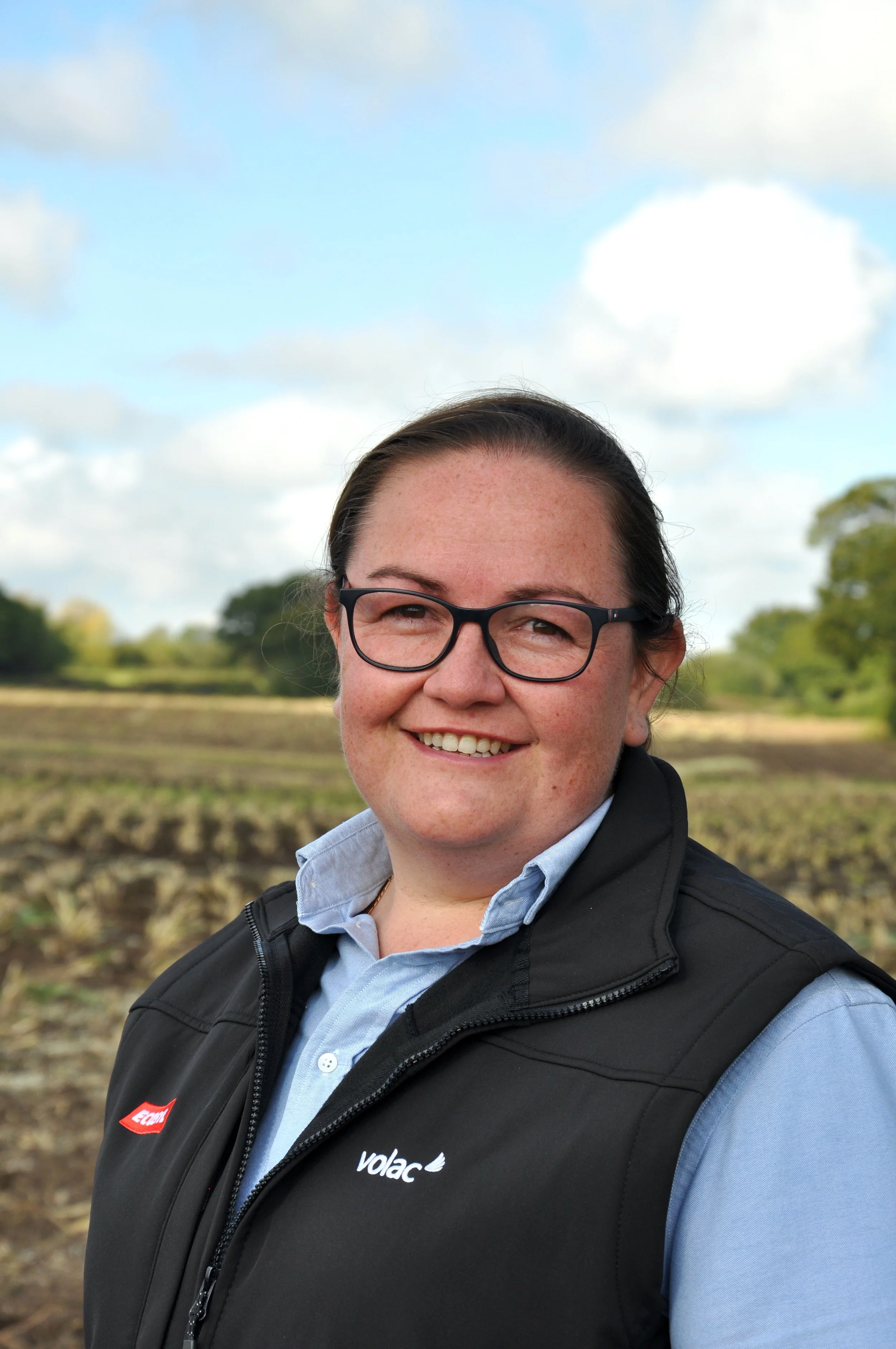With a mixed bag of grass silage this season, Volac experts around the country share their views on the role that forage maize could play.
England – Midlands
Volac technical business manager across the Midlands, Amanda Clements, says a drought-induced shortage of early grass silage on many farms means maize silage could be something of a lifeline for many farmers in her region. Especially with maize crops generally looking well.
Amanda says: “As well as a lot of people having to open this year’s first-cut grass clamps early, the extended dry spring meant regrowth for second cuts was slow.
“By contrast, rain arrived just in time for maize in many places. If short of forage, it will be crucial to look after maize properly at harvest and in the clamp.”
Historically, Amanda says some wastage around the top and shoulders of maize clamps used to be tolerated. But with herd sizes having expanded, she says those days are gone.
If you have six inches of waste at the top of the clamp you are potentially losing half the dry matter (DM) in that layer, and the DM remaining will be lower in nutritional value and potentially less palatable.
“Plus, there are likely to be hidden losses below this layer that you cannot see. If you multiply this all the way back through the clamp, you are looking at huge losses.
“DM is lost when spoilage bacteria, yeasts and moulds feed on the most nutritious parts of the maize silage, turning it into unwanted compounds including carbon dioxide (CO2). If farmers could only see the amount of CO2 produced there would be a lot more focus on preservation. If silage is mouldy, there is also a substantial risk of mycotoxins,” she adds.
In response, Amanda says it is crucial to remove all the air from clamps to aid fermentation and reduce the risks of yeast and mould growth. The dual-acting additive Ecocool has been proven to reduce DM losses in both these areas, she points out.
“Traditionally, farmers might not have used an additive on maize. But more are now realising its value. With decent milk prices, there is also extra financial headroom to try an additive to protect this year’s maize silage," she adds.
England – South
In Southern England, Ken Stroud says the dry spring has taken its toll on both grass and maize crops.
Although there was some rain, he says it came too late to help growth of third-cut grass and some second cuts. And while maize planted early into moist seedbeds got away well initially, the June heat caused it to suffer and meant any later-planted maize really struggled, he adds.
Ken says “Any rain that did arrive was localised. The upshot is we need a great maize harvest because some grass crops are not good, but also do not take your focus off grass silage because some maize could end up disappointing.
“In addition, where maize fields were planted at different times, we are likely to see a range of maturities. If this happens on the same farm, there will be a temptation to pick an average harvest date.
“But that could compromise DM and quality because under-ripe crops will not have produced maximum starch yields, and over-ripe, drier crops will be more difficult to consolidate and at greater risk of heating and mycotoxins.
As always, correct additive choice for maize will be crucial. Look for a dual-acting one with the power to reduce heating but also aid fermentation of greener material.
“The other reason to minimise DM losses is for silage carryover. We have no idea how late turnout might be next spring and therefore how long this year’s silage needs to last. Few farms have 20% carryover of silage stocks but they should have,” Ken suggests.
Wales and the Welsh borders
Volac technical business manager for Wales and the borders, Peter Smith, says on-farm grass silage stocks are generally good in his region, but quality will be variable.
Farmers who took first-cut early, while there was moisture, achieved good second cuts, he says, but those who waited to take heavier first-cuts saw aftermaths struggle to recover. Having seen this trend over several seasons, he believes more farmers will cut earlier next year.
Peter says: “Although quite a lot of maize was drilled in dry conditions, producing backward growth, some did go in early when there was moisture.
“Either way, maize could help to make up for this year’s lower energy grass silage. Two keys to maximising maize’s energy content are to harvest it at the correct time and to make sure clamp management is spot on.
“A lot of farmers are moving towards harvesting maize while still green. Provided the cob is ripe, this is perfect for maximising energy because green tissue is more digestible. Dead maize foliage is pretty much like feeding straw.
“Equally, make sure consolidation and clamp sealing are done properly. The other big risk in maize silage is mycotoxins. But research has shown that, as well as improving fermentation efficiency and reducing heating, ensiling with Ecocool can significantly limit the buildup of mycotoxins in maize silage,” he adds.
Expanding on this, Peter says without an additive levels of the mycotoxins, mycophenolic acid and roquefortine C, increased from zero at ensiling to more than 5,000 and 8,000 parts per billion respectively by the time the crop had been ensiled for 95 days then exposed to air for 12.8 days.
By comparison, with Ecocool applied at ensiling, accumulation of both mycotoxins was controlled to levels 98% lower than in untreated silage, he adds.
Peter says: “There was clear evidence of Ecocool significantly improving the hygienic quality of the silage due to its action against yeasts and moulds.
“The research also showed that neutral detergent fibre digestibility (NDFD) in the treated silage exceeded that of the untreated silage by as much as 4% after air exposure. This is significant because increasing NDFD is associated with improved milk yield.
”Clearly, if mycotoxin levels are already high in the crop at harvest, neither good ensiling practice nor the additive can remove this. In this case, a separate specialist mycotoxin remediation treatment, such as Ultrasorb, is needed,” he adds.
Scotland
Although maize growing is edging further into Scotland, grass is still the main winter silage, says technical business manager in the region, Freya Webber.
But a common problem this year has been grass ensiled drier than expected due to the warm weather, which underlines the need to wilt to the correct %DM for remaining cuts, she maintains.
Freya says: “In warm conditions, over-wilting increases spoilage organisms on the sward, reduces quality and makes consolidation difficult. So be prepared to shorten wilting times and modify techniques if needed to achieve the optimal 28-32% DM.
“Alternatively, if there is no dry window in sight, do not be tempted to leave cut grass out to ‘dry’ longer. The longer it is left out in wet conditions, the greater the risk of soil contamination and spoilage organisms,” she adds.
Levels of two mycotoxins in maize at ensiling and after 95 days ensiled plus 12.8 days exposed to air.
Want more tips on making consistently better silage? Head over to our website.





